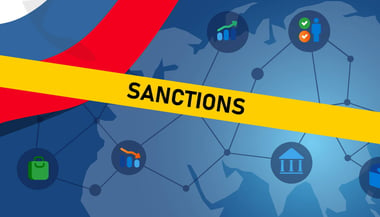The concept of watch list screening has become increasingly relevant in recent years, especially in the wake of global security threats and financial crimes. The goal of watch list screening is to identify individuals or entities that are deemed a threat to national security, public safety, or financial stability, and to prevent them from engaging in activities that could harm the country, its citizens, or the economy. This process is crucial for governments, financial institutions, and other organizations that have a duty to protect their people, assets, and interests. However, watch list screening is not without its challenges and limitations, which can result in false positive matches and operational inefficiencies.
In this blog, we will discuss the best practices for enhancing the accuracy, efficiency, and effectiveness of watch list screening programs. We will cover various topics such as data quality, match algorithms, screening tools, and process improvement. The aim of this guide is to help organizations make informed decisions about their watch list screening strategies, so that they can better protect their people, assets, and interests, while minimizing the risk of false positive matches and operational inefficiencies.
Understanding Watch List Screening
Watch list screening is a critical security measure used to prevent dangerous individuals from accessing sensitive locations, assets or information. It involves checking the names of individuals against a database of known or suspected security threats. This can include individuals with criminal records, terrorism links, or those on a no-fly list.
Currently, watch list screening is usually conducted manually, by checking the name of an individual against a list of names stored in a database. This process can be time-consuming and prone to human error, and as a result, can slow down the process of granting access to individuals who are not security threats. In some cases, organizations use automated systems to assist in the screening process. These systems compare the name of the individual against the watch list database and generate a red flag if a match is found. However, these systems can still produce false positive results, which can lead to innocent individuals being wrongly flagged as security threats.
Effective watch list screening is crucial in maintaining the security of sensitive locations, assets, and information. By identifying individuals who pose a security threat, organizations can take steps to prevent them from accessing restricted areas, thus preventing potential security breaches. Additionally, an effective watch list screening process can reduce the number of false positive results and minimize the inconvenience caused to innocent individuals. This can improve the overall efficiency of the screening process and help to maintain the public trust in security measures.
Factors affecting the effectiveness of Watch List Screening
Data quality
The quality of the data used in watch list screening plays a crucial role in its effectiveness. Poor quality data can lead to incorrect matches, false positivesand false negatives, and a high rate of manual interventions. Therefore, it is essential to ensure that the data used is accurate, up-to-date, and relevant to the watch list screening process.Data sources and integration
The various data sources used in watch list screening can vary in terms of quality, accuracy, and completeness. Integrating these data sources effectively is crucial to the accuracy of the watch list screening process. For example, using data from multiple sources such as government databases, public records, and social media can increase the chances of finding a match. However, if these data sources are not integrated properly, it can lead to duplicated records, missed matches, and errors in the screening process.
Matching algorithms and accuracy
The accuracy of the matching algorithms used in watch list screening is crucial to the overall effectiveness of the process. The algorithms used should be able to match records accurately, considering variations in spelling, name format, and date of birth. Inaccurate matching algorithms can lead to missed matches, false positives and false negatives, and a high rate of manual interventions.
Human error
Human error can have a significant impact on the effectiveness of watch list screening. The manual process of screening watch lists can lead to mistakes in data entry, incorrect matches, and a high rate of false negatives. Additionally, manual interventions in the screening process can be time-consuming, increasing the risk of missed matches.
False positives and false negatives
False positives occur when an individual is incorrectly flagged as a match on a watch list, while false negatives occur when an individual who is on a watch list is not detected during the screening process. Both false positives and false negatives can have significant consequences, ranging from inconvenience to individuals to potential security threats. Therefore, it is crucial to minimize the occurrences of false positives and false negatives in the watch list screening process.
Techniques for Improving the Effectiveness of Watch List Screening
- Data Normalization and Standardization: The first step in improving the effectiveness of watch list screening is to ensure the quality of the data being used. This can be achieved through data normalization and standardization. Data normalization involves converting data into a consistent and standardized format, making it easier to compare and match. Standardization involves ensuring that data is consistent across different sources and systems, reducing the risk of human error and improving the accuracy of the screening process.
- Use of Machine Learning and Artificial Intelligence: The use of machine learning and artificial intelligence (AI) can significantly improve the accuracy and efficiency of watch list screening. AI algorithms can be trained to recognize patterns and identify matches with a high degree of accuracy, reducing the risk of false positives and false negatives. This technology can also help to identify potential matches that may have been missed by traditional watch list screening methods.
- Enhanced Data Sources and Integration: To improve the accuracy of watch list screening, it is important to have access to a comprehensive and up-to-date list of watch list entries. This requires the integration of multiple data sources, including government databases, financial institutions, and commercial sources. By integrating these sources, it is possible to create a more complete and accurate watch list, reducing the risk of false negatives and improving the overall effectiveness of the screening process.
- Matching Algorithms: The accuracy of watch list screening is also impacted by the matching algorithms used. By continuously improving and refining these algorithms, it is possible to reduce the risk of false positives and false negatives, and to identify matches with a high degree of accuracy. This can include the use of fuzzy matching algorithms, which take into account variations in names and other data, as well as the use of probabilistic matching algorithms, which assign a score to each match based on its likelihood of being a true match.
Tookitaki's Smart Screening Solution
Tookitaki, a leading provider of Anti-Money Laundering (AML) solutions, offers a Smart Screening solution as part of its AML suite. This solution is specifically designed to detect potential matches against watchlists, sanctions lists, and politically exposed persons (PEPs). With a built-in transliteration engine and support for 20+ languages and 10 different scripts, Tookitaki's solution ensures effective cross-lingual matching.
Tookitaki's screening solution is equipped with over 50 name matching techniques and can screen prospects, customers, and counterparties. The module can profile customers and their counterparties with ease, making it highly configurable to the specific needs of each financial institution. With support for multiple attributes, such as name, address, gender, date of birth, and date of incorporation, Tookitaki's solution provides a secondary layer of information to minimize potential risk.
Thanks to Tookitaki's cutting-edge technology, financial institutions (FIs) can now onboard new customers faster and with greater confidence. The solution has been designed to reduce false positives by 60%, ensuring an accurate assessment of risk. With Tookitaki's smart screening solution, FIs can improve the effectiveness of their watchlist screening process and maintain a secure financial environment.
Take the Next Step: Request a Demo Today
Watch list screening is a critical component of Anti-Money Laundering (AML) compliance for financial institutions. It helps detect and prevent transactions with individuals and entities that are under sanctions, on PEP lists, or are otherwise known to pose a risk to the financial system. It is imperative that watch list screening is performed accurately and effectively to minimize the risk of financial crime and ensure regulatory compliance.
Tookitaki's Smart Screening module is designed to enhance the effectiveness of watch list screening by providing a comprehensive and accurate solution. It helps FIs reduce the risk of false positives and quickly onboard new customers without worry. We invite financial institutions to experience the benefits of Tookitaki's Smart Screening for themselves. Request a demo today and see how we can help improve the effectiveness of your watch list screening process.
Anti-Financial Crime Compliance with Tookitaki?






